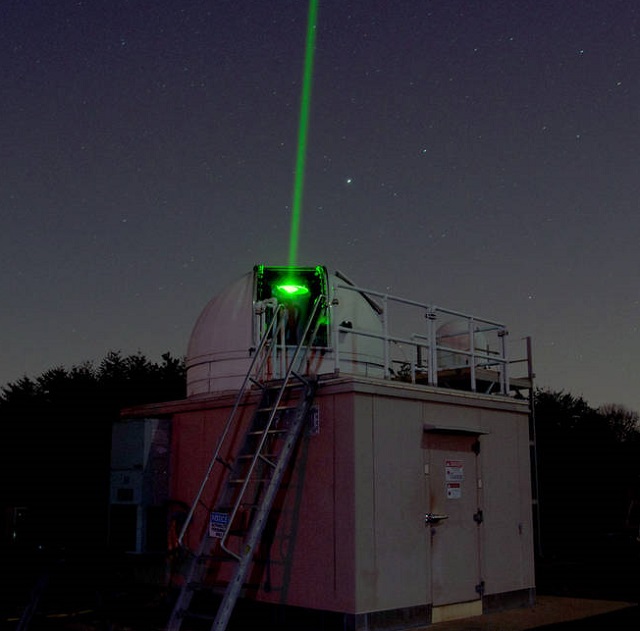New Arctic Laser-Ranging Station to Support GPS
NASA and the Norwegian Mapping Authority are partnering to develop a satellite laser ranging station 650 miles from the North Pole that will produce high-precision locations of orbiting satellites, improve the efficiency of marine transportation and help track changes in ice sheets.
The Arctic station will be the latest addition to a global network of space geodetic stations, which measure and monitor the size and shape of Earth, its orientation in space, the exact location of points on its surface and how these locations change over time.
Under the new agreement signed on August 7, Norway and NASA will build and install a satellite laser ranging facility in the scientific base of Ny-Ålesund, Svalbard. The ground-based laser transmits ultrashort laser pulses aimed at satellites specially equipped with a retroreflector, an array of special mirrors that bounce the pulses back. The system measures the time it takes for the light to travel back to its point of origin, which is used to determine the position of the satellite with respect to the ground station with an accuracy of around 0.04 inches (1 millimeter).
The laser ranging observations will help refine the Global Geodetic Reference Frame, the basis for setting coordinates for all locations on Earth’s surface. The reference frame is used to measure the position of objects in space with respect to the Earth, as well as to precisely monitor motions of Earth’s crust, changes in sea level and to support satellite positioning technology like GPS.
The new Norwegian geodetic station will be the northernmost of its kind and will be well positioned for tracking satellites that follow polar orbits, as many of NASA’s Earth-observing missions do.
To make sure the laser ranging system is able to work in Arctic conditions, NASA will use a telescope dome strong enough to open and break the ice that might accumulate on top during Svalbard’s frigid winters. The telescope will be mounted on a pointing gimbal that can still move when exposed to very cold temperatures. To be able to work during the Arctic summertime, when the constant sunlight makes it difficult to observe the stars needed to calibrate the telescope, NASA specified that this telescope has to be stable for months at a time.
The current goal is to have all systems in operation by 2022.
 The Next Generation Satellite Laser Ranging station at the Goddard Geophysical and Astronomical Observatory in Greenbelt, Maryland. The laser ranging station NASA will build in Svalbard will look similar to this one, with adaptations to work in the Arctic environment. Credits: NASA
The Next Generation Satellite Laser Ranging station at the Goddard Geophysical and Astronomical Observatory in Greenbelt, Maryland. The laser ranging station NASA will build in Svalbard will look similar to this one, with adaptations to work in the Arctic environment. Credits: NASA
